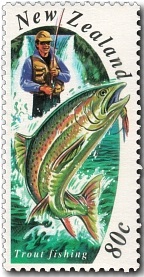Imidacloprid (IMI) is the largest selling insecticide internationally. Little is known about the toxicokinetics of IMI in fish, however. In vivo time-course studies were conducted to study the distribution and elimination of IMI in rainbow trout. Animals confined to respirometer-metabolism chambers were injected with a low (47.6 ìg/kg), medium (117.5 ìg/kg) or high (232.7 ìg/kg) dose directly into the bloodstream and allowed to depurate. The fish were then sampled to characterize the loss of IMI from plasma and its appearance in expired water (all dose groups) and urine (medium dose group only). In vitro biotransformation of IMI was evaluated using trout liver S9 fractions. The plasma time-course data indicated an early (< 12 h) distributional phase followed by a log-linear terminal elimination phase. Mean total clearance (CLT) values determined by non-compartmental analysis were 21.8, 27.0 and 19.5 mL/h/kg for the low, medium and high dose groups, respectively. Estimated half-lives for the same groups were 67.0, 68.4 and 68.1 h, while mean fitted values for the steady-state volume of distribution (VSS) were 1.72, 2.23 and 1.81 L/kg. Measured branchial elimination rates were much lower than expected, suggesting that IMI is highly bound in blood. Renal clearance rates were greater than measured rates of branchial clearance (60% of CLT in the medium dose group), possibly indicating a role for renal membrane transporters. There was no evidence for hepatic biotransformation of IMI. Collectively, these findings suggest that IMI would accumulate in trout in continuous waterborne exposures.
Source:
Frew, J., J. Brown, P. Fitzsimmons, A. Hoffman, M. Sadilek, C. Grue, AND J. Nichols. Toxicokinetics of the neonicotinoid insecticide imidacloprid in rainbow trout (Oncorhynchus mykiss). COMPARATIVE BIOCHEMISTRY AND PHYSIOLOGY PART C: TOXICOLOGY & PHARMACOLOGY . Elsevier Science Ltd, New York, NY, 205:34-42, (2018).
https://cfpub.epa.gov/si/si_public_record_report.cfm?dirEntryId=339605

- Login om te reageren
